Realizing Children’s Rights in Barbados
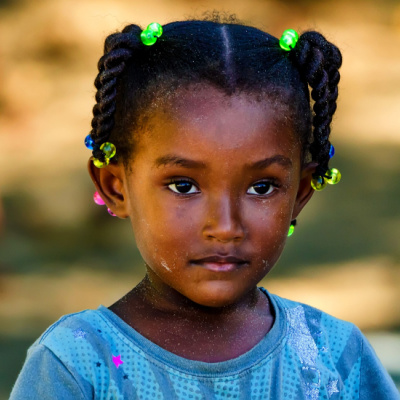
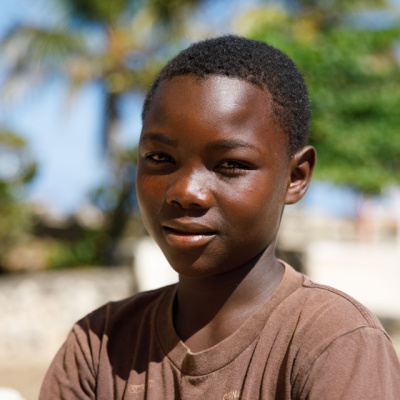
The children of Barbados face an array of interlinked obstacles which inhibit the fulfilment of their fundamental rights. Children in Barbados are at risk of childhood obesity, corporal punishment, juvenile justice and poverty. Most pressingly, they are at risk of non-communicable diseases and childhood obesity. These risks combined with systemic poverty, poor health and sanitation conditions, further endanger their lives.

Children’s Rights Index: 8,48 / 10
Yellow level: Satisfactory situation
Population: 287,371
Pop. ages 0-14: 16.6%
Life expectancy: 79.19 years
Under-5 mortality rate: 12‰
Barbados at a glance
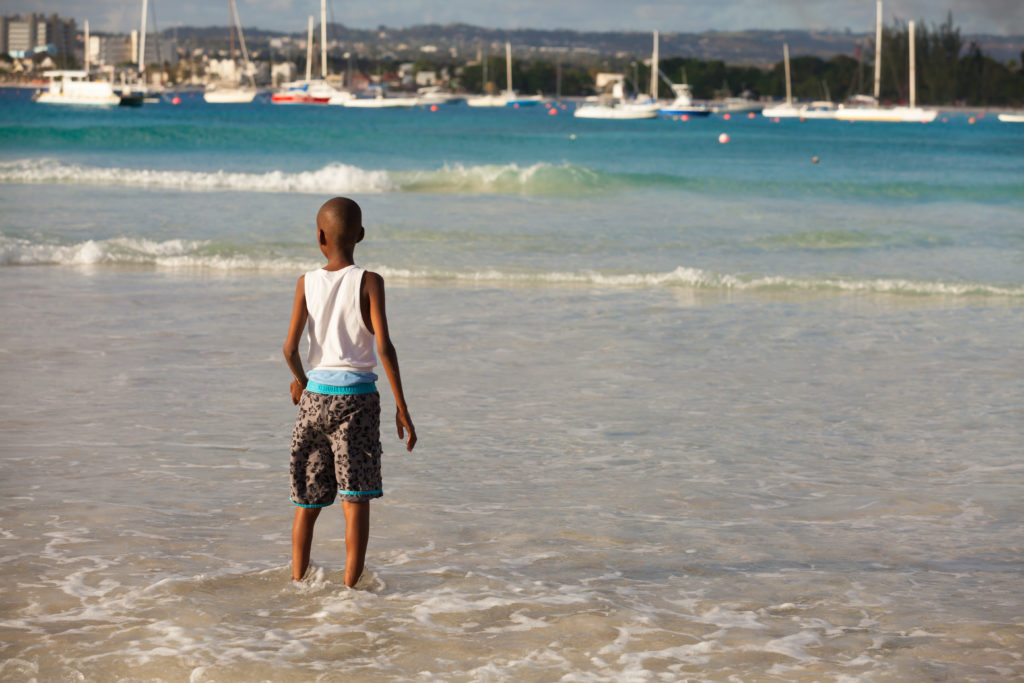
Barbados is a small island country located in the Lesser Antilles of the West Indies in the south-eastern part of the Caribbean Sea. It is located 100 miles (160 kilometres) to the east of Saint Vincent and the Grenadines. Saint Lucia is located to the north and Trinidad and Tobago is to the south of Barbados. Bridgetown, formerly known as the Town of Saint Michael, is its capital, largest and principle seaport city which lies along the southwestern coast of the island (Jackson et al, 2022).
Mount Hillaby, the highest point on the island, sits at 1,102 feet (336 meters) to the north central part of the island. Across the rest of the island, the land declines sharply and is surrounded by 300 feet (90 meters) of coral reefs. Scotland District, to the north east, is the only part of the island that is not covered in coral reefs due to erosion.
The main source of domestic water supply is provided through a water desalination plant, which is fed by rainwater draining though the coralline limestone cap. The natural environment of the island is predominately residual soils, rich in limestone and phosphates (Jackson et al, 2022).
Prior to the arrival of the Portuguese and Spanish settlers in the 15th century, the original inhabitants of Barbados were the Kalinago and Amerindian Indigenous peoples. The island’s name is believed to have been given by the Portuguese settlers, naming it os Barbados, meaning the “bearded ones,” referring to the fig trees and bearded men on the island. In the 16th century, the small and remote location of the island as well as depopulation, led the Portuguese and Spanish settlers away (Jackson et al, 2022).
Following the departure of the Portuguese and Spanish settlers, on 14 May 1627, the William and John Ship, a British expedition, captained by John Powell, arrived in Barbados with eighty Englishmen and ten African slaves. It was during this period that Barbados was renamed Little England, carrying with it colonial practices which turned it into a slave society and slave economy (Bulbulia, 2021). This slave society and economy was further exacerbated through the Sugar Revolution, encouraging forced labour from slaves who were brought from West Africa. “Race”, and thereby ethnic groups –whites, coloureds, and blacks, were a fundamental determinant of who worked on sugar plantations. There were three categories of persons in Barbados: free, indentured, and enslaved (Jackson et al, 2022).
Barbados became an independent state on 30th November 1966 after joining the West Indies Federation. Post-independence, Barbados had a stable political system which was led by the Democratic Labour Part (DLP) until 1976 when the Barbados Labour Party took over government leadership. In November 2021, Barbados became a republic, removing Queen Elizabeth II as their head of state and electing the island’s first president, Dame Sandra Mason (Jackson et al, 2022).
Status of children’s rights [1]
Barbados has committed to several international instruments for the protection of children’s rights. In 1990, Barbados ratified the Convention on the Rights of the Child (CRC).
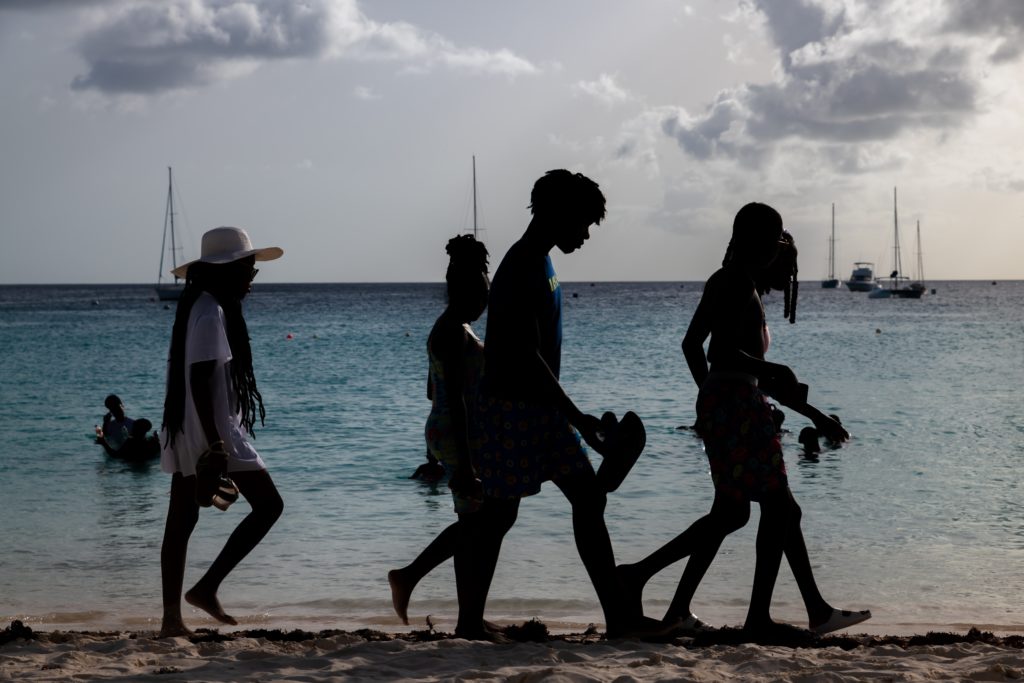
Although the island country ratified the CRC, it is not incorporated into domestic legislation and does not prevail under national law. Nationally, a consolidated and comprehensive Children’s Act does not exist. However, the government has taken steps to protect children through the Minors Act 1985, Child Protection Act 1990, Juvenile Offenders Act 1998, Sexual Offences Act 1992, Domestic Violence (Protection Orders) Act 1992 and Family Law Act 1982 amongst a few other pieces of national legislation (CRIN, 2012).
Barbados is also party to other international human rights instruments including the Convention on the Elimination of All Forms of Discrimination against Women (CEDAW) that was ratified in 1980, the International Convention on the Elimination of All Forms of Racial Discrimination in 1972 and the International Covenant on Civil and Political Rights in 1973.
The government has not signed or ratified the Optional Protocol to the Convention of the Rights of the Child on the involvement of children in armed conflicts and on the sale of children, child prostitution and child pornography. Barbados is a member of the Organization of American States (OAS) and is bound to the Inter-American System of Human Rights. In 1995, the government ratified the Inter-American Convention on the Prevention, Punishment, and Eradication of Violence Against Women (known as the Belém do Pará Convention).
The government has ratified the International Labour Organization (ILO) Minimum Age Convention (No. 138) and the ILO Worst Forms of Child Labour Convention (No. 182). In December 2017, Barbados, alongside 27 other countries within the Caribbean Community and Common Market (CARICOM) community, joined the Regional Initiative for Latin America and the Caribbean Free of Child Labour. This Regional Initiative reflects the commitment by other CARICOM countries to achieve Sustainable Development Goal Target 8.7 to end child labour (Regional Initiative Latin America and the Caribbean, 2017).
Addressing the needs of children
Right to education
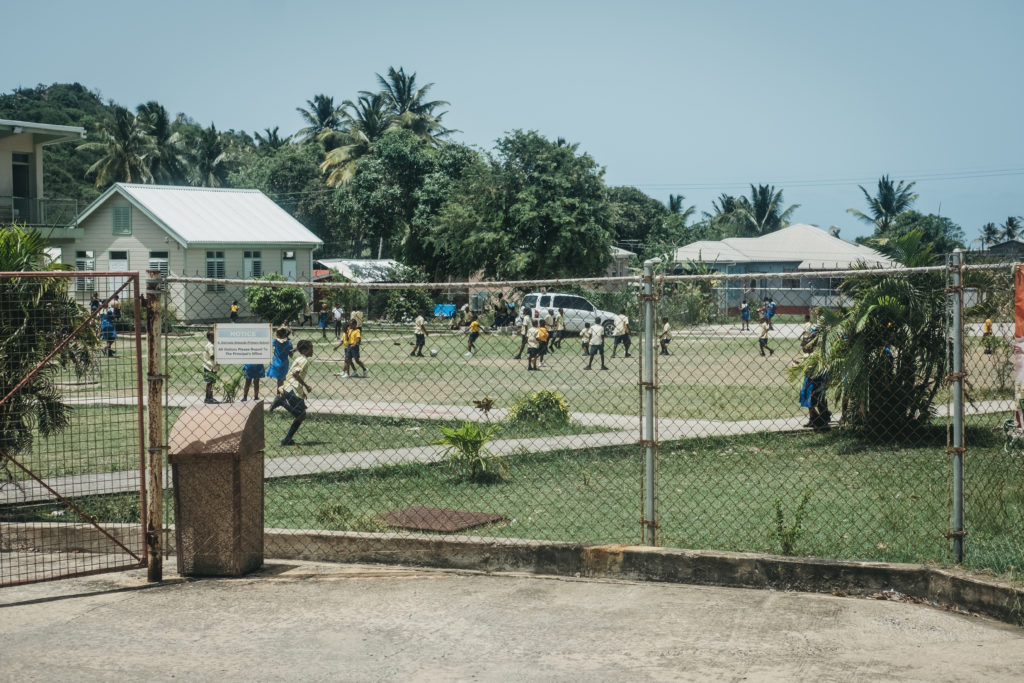
In Barbados, the right to education is governed by the Ministry of Education, Youth Affairs and Culture and the Education Act 1987 is the main regulatory framework for the education system from primary level through to the tertiary level. The government places a strong emphasis on education, and this is demonstrated through the 98% literacy rate (Ministry of Education, Technological and Vocational Training, 2022). In 2018, the primary school enrolment rate was 100% and secondary school 94%. In the 2018-2019 academic school year, 10% of children were out of school (UNICEF, 2021).
In Barbados, formal education is organized into three stages: primary school, beginning at age four up until the age of eleven. All children are entitled to free public primary education and to transition into secondary school, students must sit for the Barbados Secondary School Entrance Examination (BSSEE). Secondary school begins at age eleven up until the age of eighteen. At the age of sixteen, students are required to sit for the Caribbean Examination Council (CXC) examinations and the Caribbean Secondary Entrance Certificate (Ministry of Education, Technological and Vocational Training, 2022).
Across the island, there are 68 government primary schools, 21 secondary schools, 4 schools for children with disabilities, and 12 kindergartens. Additionally, there are 53 private schools in which school fees are required (Ministry of Education, Technological and Vocational Training, 2022).
Right to health
One of the leading causes of death in Barbados among children aged between ten and nineteen are non-communicable diseases (NCDs, 61%) and injuries (32%) while other deaths include maternal, perinatal and nutritional conditions (7%) (UNICEF, 2021). Due to increasing rates of NCDs, poor nutrition and childhood obesity, the government has adopted various national policies and plans to encourage healthy eating, increased physical activity and improved mental health among adolescents in Barbados (Baltag, 2019).
Alongside the Pan American Health Organization, the Ministry of Health, the Ministry of General Education, Sport and Youth, Justice, Interior, including civil society organizations adopted the World Health Organization (WHO) “Global accelerated action for the health of adolescents” (AA-HA!). Barbados became the first country in the Caribbean to develop a national adolescent health strategy. In line with the AA-HA!, the health strategy had six priority areas which included: sexual and reproductive health which included HIV/AIDS and NCDs, mental health, substance abuse, self-harm, violence, accidents and injury (Baltag, 2019).
Right to clean water
Barbados is considered one of the highest-ranking most water-stressed and water-scarce countries in the world. Due to water scarcity and limited availability of surface water on the island, Barbados is heavily dependent on water from the CARICOM countries to meet its basic needs for local water supply (OCHA, 2022). The shallow coral-based land structure of the island causes an inadequate supply of freshwater. Much of the fresh water on the island is sourced from underwater aquifers, which makes it difficult for people to access clean water (Peeva, n.d).
Right to identity
Under Section 23 of the Constitution of Barbados and the Barbados Citizenship Act, there are provisions that are discriminatory on the basis of a parent’s gender and marital status with the provisions being discriminatory towards married women and single fathers.
Barbados’ nationality law is in violation of Article 2 of the CRC as it denies a child’s ability to obtain Barbadian nationality due to the sex and marital status of the parent. This makes Barbados one of the few states to: (a) deny married mothers the ability to confer nationality on children on an equal basis with married fathers; and (b) deny single fathers the ability to confer nationality to children (Global Campaign for Equal Nationality Rights, 2017).
For example, a married Barbadian mother may only confer her nationality on her child born abroad if the mother was born in Barbados. In contrast, a married Barbadian father can confer his nationality to his child regardless of his place of birth. In the case of single parents, a single Barbadian father may not confer his Barbadian nationality to his child; however, a single Barbadian mother can confer her Barbadian nationality to her child.
The Barbados Citizenship Act, Cap 186 (last amended 1982) denies women the right to confer their nationality to their children in the case of joint adoption. Barbadian women are also denied the right to confer their nationality on their spouses. This differs for Barbadian men, as they are permitted to confer their nationality on adopted children and their spouses (Global Campaign for Equal Nationality Rights, 2017).
Risk factors 🡪 Country-specific challenges
Poverty
Since 2010, the number of children living in poverty in Barbados has risen from 15,000 to 17,000. Due to increasing poverty rates, many school-aged children benefit from the School Meals Programme (SMP). The SMP targets all primary and secondary schools on the island, with 60% of children aged 10 and 11 years old receiving school meals (Ministry of Youth and Community Empowerment and UNICEF, 2020).
In 2016, approximately 54% of children aged between 10 and 14 years old were living in single-parent households. Children living in single-parent households were more likely to experience youth poverty (Ministry of Youth and Community Empowerment and UNICEF, 2020).
Child abuse
In Barbados, corporal punishment is lawful in the home, alternative care settings, daycare and penal institutions. Article 4 of the Prevention of Cruelty to Children Act 1904, confirms “the right of any parent, teacher, or other person having lawful control or charge of a child to administer punishment to such child” (End Violence Against Children, 2015). Legislation such as the Domestic Violence (Protection Orders) Act 1994, Protection of Children Act 1990 and the Offences Against the Person Act 1994 are meant to protect children from violence and abuse, but they do not prohibit corporal punishment in childrearing (End Violence Against Children, 2015).
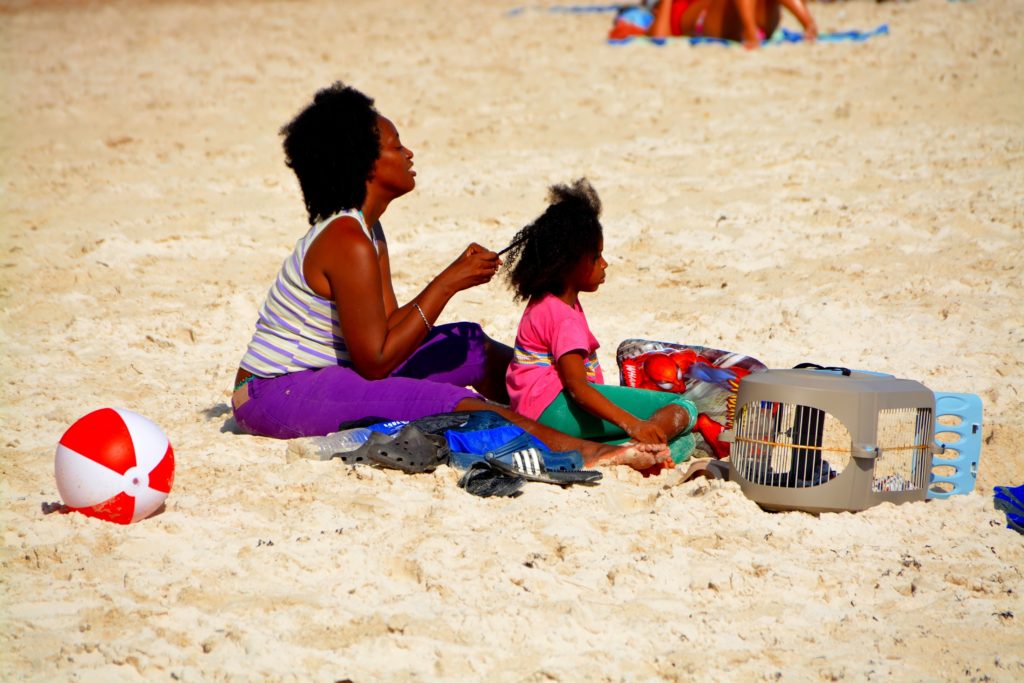
Under Article 59 of the Education Act 1983, corporal punishment is lawful within schools in Barbados (Global Initiative to End All Corporal Punishment of Children, 2017). In 2012, a national survey revealed that 72% of children between the ages of 10 to 14 years old experienced violent discipline, 65% experienced psychological aggression and 46% experienced physical punishment (UNICEF, 2021).
Health
Over the past decade, childhood obesity has become a public health concern and as mentioned earlier, non-communicable diseases were identified as one of the leading causes of death in Barbados. In 2018, the Barbados Childhood Obesity Prevention Programme (B-CHOPP) was established by the Heart and Stroke Foundation of Barbados in order to address the increasing rates of childhood obesity.
Under the National Plan of Action for Childhood Obesity Prevention and Control (2015-2018), B-CHOPP had five main strategic goals: (1) strengthen coordination and management of obesity prevention, (2) strengthen breastfeeding programs, (3) promote physical activity, (4) develop and implement dietary regulatory practices and policies, (5) implement healthy school initiatives. This Plan of Action was developed in-line with Barbados Strategic Plan for the Prevention and Control of Non-Communicable Disease (WHO, 2015).
Since the establishment of B-CHOPP, the Heart and Stroke Foundation have initiated several campaigns to prevent childhood obesity in Barbados such as the “Switch it Up Protect Our Children” media campaign that encouraged parents, guardians and policy makers to support policies that restrict the number of sugary drinks that are available in schools and restrict the amount of food advertising on television (Heart and Stroke Foundation, 2019).
The Heart and Stroke Foundation implemented the “Are We Drinking Ourselves Sick” media campaign in 2022 which highlighted the negative health consequences of sugary drinks such as sports energy drinks, carbonated and non-carbonated soft drinks and fruit juices. This campaign came at a time to support the governments increase in excise tax for sugary drinks (Heart and Stroke Foundation, 2022).
After a recommendation by the World Health Organization (WHO) in 2015, the sugar-sweetened beverages (SSB) tax was introduced in Barbados as an intervention to reduce sugar consumption due to the rising cases of obesity and non-communicable diseases. Barbados was one of ten countries in the world to introduce this tax which targeted imported sugary drinks, carbonated drinks, sports energy drinks and syrups. A year after the implementation of the tax, sales on sugary drinks dropped (Wetzel, 2022).
Unhealthy, processed foods, coupled with a sedentary lifestyle after school has led to the increase in childhood obesity. In 2012, a WHO Global School Health Survey across 26 schools in Barbados found that 31.5% of children were obese and 14.4% were overweight. Barbados has seen a shift away from children eating traditional and local food to preferring “western” foods that are higher in salt, fats, saturated fats, refined sugars and cholesterol (WHO, 2015).
The Ministry of Health and the Ministry of Education worked together to implement the Guidelines for Healthy and Nutritious Foods in Schools and the National School Meals Programme. The main aim of these guidelines was to support, raise awareness and educate school cafeteria staff on healthy food and beverages for children (WHO, 2015).
Juvenile justice
In Barbados, juvenile justice is governed by the Juvenile Offenders Act 1932, the Corporal Punishment Act 1899 and the Magistrate’s Court Act 2001. Under the Juvenile Offenders Act, a child is defined as a person under the age of fourteen and the age of criminal responsibility as eleven. Children between the ages of sixteen and seventeen years old can be tried as adults. Capital punishment is unlawful for children under the age of eighteen but corporal punishment and life sentences are lawful (CRIN, 2010).
The laws that govern the administration of juvenile justice demand more attention as there are several concerning aspects of the law relating to the Juvenile Offenders Act and the Reformatory and Industrial Schools Act (UNICEF, 2015). For example, the Juvenile Offenders Act 1932 is outdated and does not incorporate any principles from the UN CRC, it does not sufficiently enshrine children’s right to participate in their proceedings, it has limited sentencing options, it is discriminatory against boys and exempts girls from physical abuse (UNICEF, 2015).
Data collected in the Situational Analysis of Justice for Children in Barbados revealed that between 2011 to 2013, there were 386 arrests of children between the ages of 12 and 18 years. Of these 386 arrests, 316 were boys and 70 were girls. The most common offence amongst both boys (17.1%) and girls (24.3%) was assault. For children remanded into custodial care at the Government Industrial School (GIS), the offences ranged from assault, breach of probation, possession of a controlled substance (such as marijuana), burglary, theft, public disturbance, possession of a weapon and wandering.
Written by Vanessa Cezarita Cordeiro
Internally proofread by Aditi Partha
Last updated on 23 October 2022
References:
Baltag, Dr. V. (2019, August 14). “Barbados – meeting the health needs of its adolescents.” Retrieved from the World Health Organization, accessed on 22 October 2022.
Bulbulia, S. (2021, November 29). “The English turned Barbados into a slave society. Now, after 396 years, we’re free.” Retrieved from The Guardian, accessed on 17 October 2022.
CRIN. (2010, July). “Inhuman sentencing of children in Barbados.” Retrieved from Child Rights International Network, accessed on 17 October 2022.
CRIN. (2012, April 16). “Barbados: National laws.” Retrieved from Child Rights International Network, accessed on 17 October 2022.
End Violence Against Children. (2018, July). “Corporal punishment of children in Barbados.” Retrieved from End Violence Against Children, accessed on 18 October 2022.
Global Campaign for Equal Nationality Rights. (2016, December 15). “Additional information for the consideration of the Committee on the right of every child to acquire a nationality under Article 7 CRC.” Retrieved from the Institute on Statelessness and Inclusion, accessed on 19 October 2022.
Global Initiative to End All Corporal Punishment of Children. (2017, February). “Briefing on Barbados for the Committee on the Rights of the Child 74th session.” Retrieved from the Global Initiative to End All Corporal Punishment of Children, accessed on 18 October 2022.
Heart and Stroke Foundation. (2019). “Adults must help children avoid sugary drinks at home and at school.” Retrieved from The Heart and Stroke Foundation of Barbados, accessed on 19 October 2022.
Heart and Stroke Foundation. (2022, May 4). “Barbados, are we drinking ourselves sick? Campaign to combat lifestyle illness.” Retrieved from The Heart and Stroke Foundation of Barbados, accessed on 19 October 2022.
Jackson, C.S., Phillips, A.D., Marshall, W.K., (2022, July 28). “Barbados country profile.” Retrieved from Encyclopaedia Britannica, accessed on 17 October 2022.
Ministry of Education, Technological and Vocational Training. (2022). “Barbados education system.” Retrieved from the Ministry of Education, Technological and Vocational Training, accessed on 22 October 2022.
Ministry of Youth and Community Empowerment and UNICEF. (2020, January). “Generation unlimited: the well-being of young people in Barbados.” Retrieved from the Ministry of Youth and Community Empowerment and UNICEF Office for the Eastern Caribbean Area, accessed on 17 October 2022.
OCHA. (2022, September 20). “Barbados: country profile.” Retrieved from UN Office for the Coordination on Humanitarian Affairs, accessed on 17 October 2022.
Peeva, N. (n.d). “Barbados environmental issues and IT.” Retrieved from Donald Bren School of Information and Computer Sciences, accessed on 17 October 2022.
Regional Initiative Latin America and the Caribbean. (2017, December 12). “Barbados joins the Regional Initiative Latin America and the Caribbean free of child labour.” Retrieved from the Regional Initiative Latin America and the Caribbean, accessed on 19 October 2022.
UNICEF. (2015). “Situation analysis of justice for children in Barbados.” Retrieved from UNICEF Office for the Eastern Caribbean and Ministry of Home Affairs, accessed on 18 October 2022.
UNICEF. (2021, July). “Generation unlimited: Well-being of young people in Barbados fact sheet.” Retrieved from UNICEF Office for the Eastern Caribbean Area, accessed on 20 October 2022.
Wetzel, M. (2022, April 1). “Good health doesn’t need to be taxing.” Retrieved from World Cancer Research Fund International, accessed on 19 October 2022.
WHO and Pan American Health Organization. (2015, March). “National plan of action for childhood obesity prevention and control 2015-2018 Barbados-childhood obesity prevention program (B-CHOPP).” Retrieved from the World Health Organization, accessed on 19 October 2022.
World Health Organization. (2018). “Country cooperation strategy at a glance: Barbados.” Retrieved from the World Health Organization, accessed on 22 October 2022.
[1] This article by no means purports to give a full or representative account of children’s rights in Barbados; indeed one of many challenges is the scant updated information on the children in Barbados, much of which is unreliable, not representative, outdated or simply non-existent.

